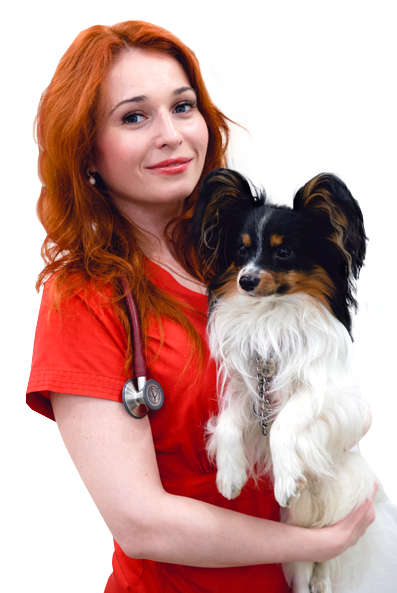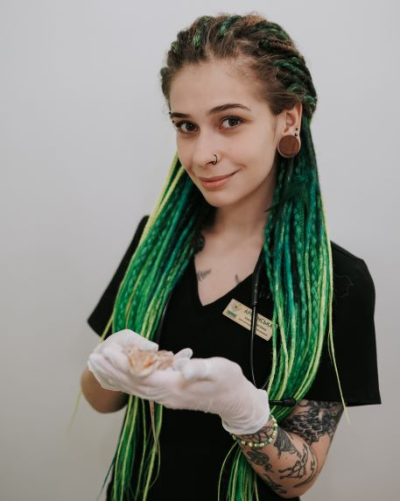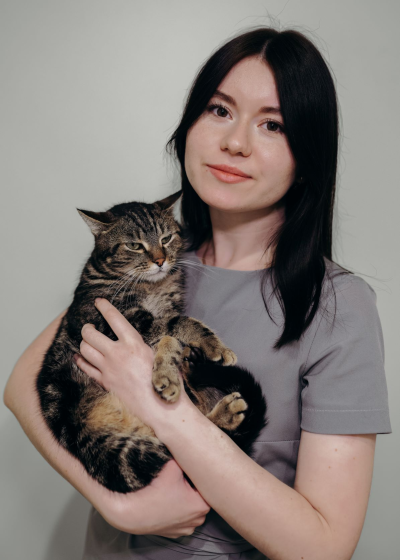Anesthesiology
Anesthesiology

An anesthesiologist is a doctor responsible for ensuring that the patient does not notice the operation
It is the anesthesiologist who is a constant at all stages with your pet, both pre- and post-operatively. The anesthesiologist studies the life history, collects anamnesis, examines and selects material for the necessary tests, knows the entire course of the operation and asks a lot of questions not out of boredom, but for a complete understanding and management of the process, and can also select the safest combination of drugs for anesthesia.
How to prepare for anesthesia?
If your pet is preparing for an operation or examination under anesthesia, it will be useful for you to learn some simple tips to increase the comfort and safety of the procedure.
Starvation diet
Modern recommendations in this matter:
- Brachiocephalic breeds (pugs, bulldogs) - due to slow digestion, they need to not eat for at least 12 hours before the operation.
- Kittens / puppies up to 6 months and adults weighing up to 2 kg - do not feed for 2-4 hours, brachiocephalic breeds for 6-8 hours. The baby should be fed a small portion of wet food (1/2-1/4 portion) and it is advisable to take a small amount of food with you so that you can feed it immediately after it wakes up.
- Geriatric patients (over 8-9 years old) - do not feed 6-8 hours before surgery
- Healthy adult animals (older than 6 months, younger than 8 years) - fasting diet for 12 hours
Water can be drunk without restrictions
!! If your pet has chronic concomitant diseases
(pancreatitis, hepatitis, diabetes) and is undergoing treatment, you should consult an anesthesiologist in advance to cancel or adjust the dosage regimen and determine the limits of the fasting diet
If the pet is under 6 years old:
In the absence of complaints and clinical symptoms of the disease, no additional examination is required for routine surgeries, but sometimes during and after the examination of your pet, the doctor may recommend taking a blood test to monitor the main indicators, which can be taken directly on the day of the visit.
If your pet is over 6 years old:
In this case, it is necessary to perform a diagnostic minimum before anesthesia to exclude pathological conditions that will require correction before anesthesia. Usually, chronic diseases are asymptomatic at the initial stages and may worsen after anesthesia. This allows the anesthesiologist to choose the right anesthetic aid and explain to the owner what complications may occur at different stages.
Recommended examinations:
- expert echo of the heart
- advanced blood tests
- and sometimes for specific surgical interventions, the anesthesiologist will recommend an abdominal ultrasound, chest X-ray, and blood coagulation test.
If your pet experiences severe stress during the trip to the clinic or may show aggression, it is advisable to start giving him/her stress-reducing medications in advance. An anesthesiologist will also help you choose these drugs by phone 044 344 88 88. Do not neglect this point, as minimizing stress before a visit to the clinic and surgery helps to make anesthesia as comfortable as possible for the patient.
All cats, especially those belonging to the breed at risk of developing heart disease
- are recommended to undergo a screening ECHO of the heart, which can be performed on the day of the visit to the clinic. Because not all pathologies in cats are accompanied by a murmur, regardless of breed and age.
Anesthetic risks
Anesthesia is primarily aimed at protecting the patient from surgical aggression, ensuring comfort, safety, and monitoring of vital processes in the patient's body. Of course, we can't forget about the risks; unfortunately, they are always present, both in a clinically healthy patient and in a patient with various comorbidities. During the examination of your animal, the anesthesiologist will definitely indicate the degree of risk and its significance during the operation
Zoolux anesthesiologists have a wide range of drugs that are selected individually for each patient, depending on weight, age and concomitant diseases, as well as all the necessary modern equipment for controlled and effective anesthesia cardiac monitors, pulse oximeters, infusion syringes, pressure measuring devices, an oxygen station, artificial ventilation devices, and modern anesthesia and breathing machines. All this, as well as continuous monitoring by an anesthesiologist during the procedure, helps reduce the risk of complications.
However, unfortunately, there is no absolutely safe anesthesia and anesthetic drugs for both animals and humans (all of them affect the functioning of the heart, blood vessels, lungs and nervous system to some extent).
The most common complications include
- lowering of blood pressure,
- disorders of the respiratory and cardiovascular systems, or
- cooling of the body.
- Any of these complications are treated by an anesthesiologist as soon as they are noticed.
Methods of anesthesia
There are several types of anesthesia:
- general anesthesia
- regional anesthesia (spinal, epidural, conduction, etc.)
- sedation,
- local anesthesia.
Each of these methods has its own indications, contraindications, and possible complications. What is the difference between them?
From the name of general anesthesia, it is clear that the animal will not just sleep. General anesthesia is a condition that involves turning off consciousness, all kinds of sensitivity, suppression of reflexes and muscle relaxation. To ensure that the animal not only falls asleep but also wakes up safely, the patient is connected to a number of devices that support the vital functions of the body (for example, a ventilator breathes for the patient). It sounds scary, but in the modern world, general anesthesia is more than a safe procedure. First of all, because there is always an anesthesiologist standing next to the patient who controls everything and does everything to make the patient feel as if nothing had happened after the operation.
There are two ways to provide general anesthesia: total intravenous and inhalation anesthesia. To perform inhalation anesthesia, we have special operating rooms equipped with anesthesia and respiratory devices and devices to control the consumption of inhalation anesthetics.
The method of anesthesia during surgery is based on a multimodal approach. This means that pain is eliminated at different levels of its occurrence, which reduces the need for analgesics in the postoperative period, shortens the hospital stay and prevents the development of chronic neuropathic pain.
In addition, anesthesiologists in our clinic use regional anesthesia under ultrasound control and with the help of the Stimuplex neurostimulator, and, if necessary, install epidural catheters for prolonged epidural anesthesia. This reduces the use of systemic analgesics and their associated side effects.
Care after anesthesia
All animals wake up in individual boxes in the hospital under the careful supervision of a doctor. Physical parameters are monitored and, after full recovery, patients are fed tasty food.
The anesthesiologist will prescribe pain therapy, comment on the general condition and tell you what to do at home.
Our task is to ensure your pet's comfortable and stress-free stay in the clinic.
We wish you and your pets good health.
Addresses of our clinics:
Вартість основних послуг
Вид послуг
Ціна
Бажаєте отримати професійну консультацію?
Наші відділення, знання та вміння лікарів, обладнання і особливе ставлення до тварин щодня лікують сотні домашніх улюбленців і рятують їм життя! Клініка працює 24/7, без перерви у вигляді святкових днів.

Наші фахівці
У розпорядженні лікарів доступні найсучасніші діагностичні інструменти










